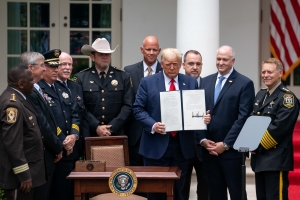Support migrant centric journalism today and donate

Concerns that the recently announced RAISE Act will affect L1 visa applications have been quashed by experts. On August 2, President Donald Trump – along with Senators David Perdue and Tom Cotton - announced the Reforming American Immigration for a Strong Economy Act (RAISE) as the first ‘meaningful’ US immigration legislation under Trump.
Initially sparking fears that skilled US immigration would suffer, sources within the White House say that the L1 visa, along with other temporary, non-immigrant visas such as H1Bs, TNs and the E1 and E2 visas, will not be affected by the new law.
Instead, the new immigration bill looks to place less value on family-based migration. However, it’s unclear whether the family members of L1 visa applicants (who would apply for an L2 visa) fall into this category, should they seek entry to the US.
Canadian and Australian visa models
It’s understood that the RAISE Act will model immigration systems similar to those used in Australia and Canada, whereby a points-based system is used to measure a US visa applicant’s level of education, English proficiency, age (with younger people given priority) and salary being offered by a US-based employer.
If passed, the bill will drastically reshape the US visa landscape, removing pathways to permanent residency that currently exist for the siblings and adult children of US citizens and green card holders. Meanwhile, the opportunities for their spouses and minors would be limited.
Unconvinced L1 visa route won’t be impacted
Despite the White House’s insistence that L1 visas will remain unaffected, US immigration lawyers remain unconvinced. Amid growing business uncertainty, there’s talk that individual workers are not guaranteed a US green card via the proposed points-based system. For L1 visa holders, this is a major headache.
Many experts argue that a points-based system to switch from an L1A visa (for managers and executives) or an L1B visa (for those with specialized skills or knowledge) will add to a process that takes years. This is especially true for L1B visa holders who have to endure PERM labor certification.
For L1A visa holders, the chances of securing a green card remain higher than those of L1B visa holders. To qualify for an EB-1 green card as an L1A visa holder, for instance, you will need to:
Have your employer file an I-140 petition on your behalf
Have a job offer in the US
Check that your priority date is current via the monthly visa bulletin released by the Department of State
File for an adjustment of status once your petition is approved
If your employer declines to sponsor you, additional options are available to you. It’s best to contact Workpermit.com to discuss your US immigration status.
Adjustment of Status or Consular Processing?
If you’re already in the US, adjustment of status is available to you, which your employer has to file an I-140 form. However, consular processing has shorter processing time and a lower cost filing fee, but you are required to attend a US consulate or embassy in your home country to participate in a one-to-one interview.
Workpermit.com can help with US employment-based visas
If you would like to apply for a US work visa – including L1 visas, E1 and E2 visas, and H1B visas - WorkPermit.com can help.
WorkPermit.com is a specialist visa consultancy with over twenty-seven years of experience dealing with visa applications. We can help with a wide range of visa applications to your country of choice. Please feel free to contact us for further details.





















